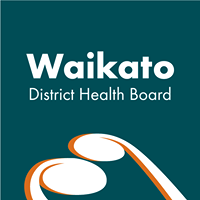New Pacific health profile a first for Waikato
Waikato’s Pacific population has increased by 49 per cent from 2001 to 2013.
And it is forecasted to increase by 70 per cent by 2028 according to the new health profile created by Waikato District Health Board’s (DHB) Population Health team.
The document is available to download on the DHB’s Future Focus page.
This Profile provides a comprehensive picture, with much needed health statistics of the health status of Pacific Peoples in the Waikato DHB region.
According to Deryl Penjueli, Waikato DHB’s Public Health manager, it will be used to highlight areas that Waikato DHB and strategic partners need to focus on for improvements in Pacific health.
"We’ve worked with a range of stakeholders, data sources, and community providers including K’aute Pasifika and South Waikato Pacific Islands Community Services to produce this document" says Deryl.
K’aute Pasifika is a Pacific Island Charitable Trust established in 1999, to address gaps in health care for Pacific communities. This has grown over time to include social services and education. The purpose of the organisation is to improve the holistic wellbeing of Pacific Island communities, and their understanding of health.
South Waikato Pacific Islands Community Services (swpics) provides services to Pacific communities within the South Waikato District. They provide a range of services including health checks for Pacific children from 0 - 5 years with Well Child, nurses, access to physical activity programmes, advocacy to assess Breast and Cervical screening services and more.
Both provide a range of vital services to Pacific Island communities and we took some time to understand the value of the profile to them and the communities they serve.
Kim Holt, general manager talks about what the health profile means to K’aute Pasifika
"This is such a valuable document for the Pacific community as historically statistics on Pacific Communities have been difficult to source, due to a variety of reasons. Including but not limited to: unrecorded ethnicity, Māori listed over part Māori and Pacific, and other barriers from poverty through to language.
"The profile demonstrates the value of the DHB working in partnership with Pacific providers who know their communities and have highly qualified staff who hold credibility and connections with wider Pasifika networks.
"It provides a good benchmark for us to track and improve on Pacific health outcomes.
"The statistics have also helped us in several different settings: Meeting with the Minster for Pacific Peoples, Alfred Ngaro; in presentations to highlight various stats to Child Matters, Wintec, Ministry of Health, and Trust Waikato for grant applications to support particular areas of need."
Visit K’aute Pasifika’s website for more information.
Akarere Henry, chief executive officer talks about what the health profile means to swpics
"South Waikato has the highest concentration of Pacific people in a Waikato region, and we work across a number of smaller, rural Pacific Island communities to provide a range of support.
"We have never had the data or evidence to support or prove what we anecdotally knew; now the Pacific health profile is our proof.
"We know what’s best for our Pacific community, we’ve worked so closely with them and we’d like to thank the DHB’s Population Health team for allowing us to co-design this document that illustrates our community’s story; identifying areas of success and areas that need our help.
"The profile has been able to support two recent proposals for services to support our Pacific communities."
Visit swpics’ website for more information.
ENDS



 Royal Commission Covid-19 Lessons Learned: Public Submissions To The COVID-19 Inquiry Close On Sunday 27 April 2025 At Midnight
Royal Commission Covid-19 Lessons Learned: Public Submissions To The COVID-19 Inquiry Close On Sunday 27 April 2025 At Midnight Te Whatu Ora Health New Zealand: Low Risk To Public Health Following Fire At South Taranaki Hotel
Te Whatu Ora Health New Zealand: Low Risk To Public Health Following Fire At South Taranaki Hotel NZCTU: Govt Vocational Education Reforms Will Cause Massive Disruption
NZCTU: Govt Vocational Education Reforms Will Cause Massive Disruption NZ Liberation Museum - Te Arawhata: Anzac Day Commemorations In France To Remember All New Zealand Soldiers
NZ Liberation Museum - Te Arawhata: Anzac Day Commemorations In France To Remember All New Zealand Soldiers Royal Commission Covid-19 Lessons Learned: We Want To Hear From As Many People As Possible, Says COVID-19 Inquiry Chair
Royal Commission Covid-19 Lessons Learned: We Want To Hear From As Many People As Possible, Says COVID-19 Inquiry Chair My ECE: Parents Reject ECE Deregulation - 'Children’s Safety Is Not Optional'
My ECE: Parents Reject ECE Deregulation - 'Children’s Safety Is Not Optional'